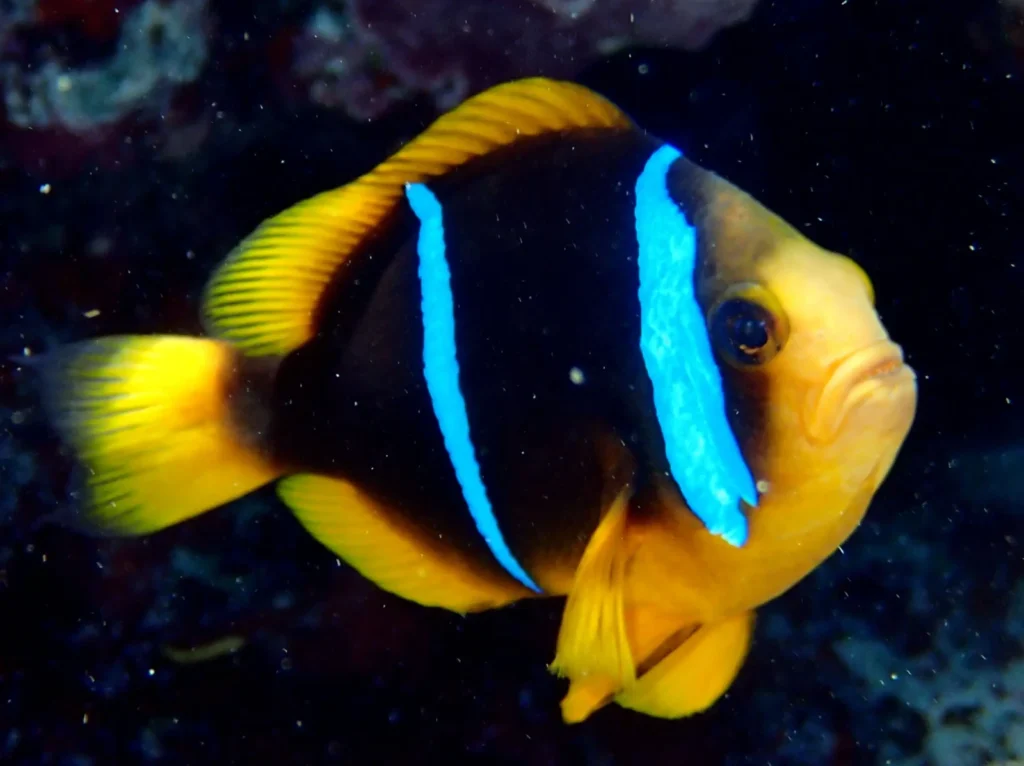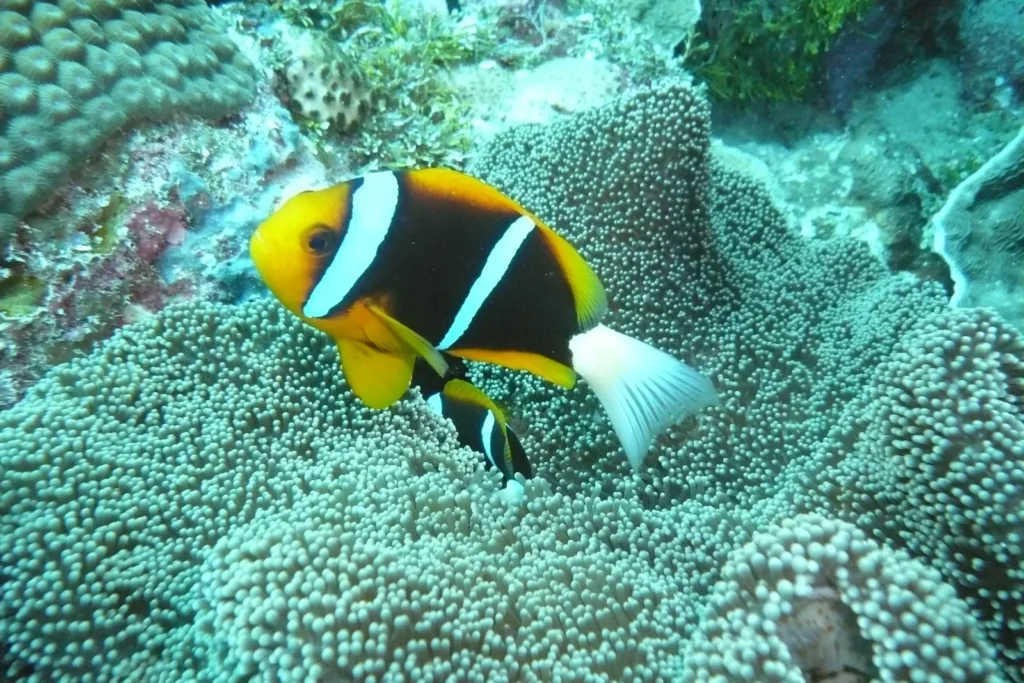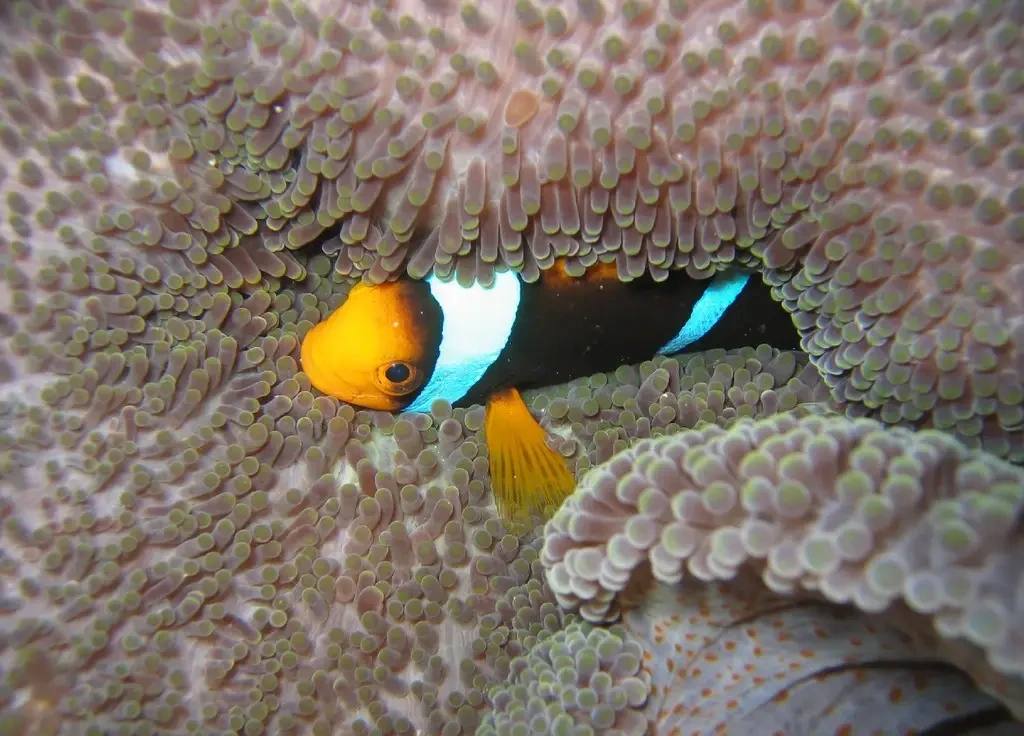Among the many colorful clownfish golden-finned clown (Amphiprion chrysopterus) it is distinguished by its unusual color. Its main feature is golden-orange or yellow finswhich are perfectly combined with a contrasting dark body and white stripes.
✔ It lives in the coral reefs of the Western Pacific Ocean
✔ It has a symbiotic relationship with sea anemones
✔ Aggressively defends its territory
✔ One of the largest species of clownfish
This colorful inhabitant of tropical waters is not only a decoration of reefs, but also an important part of their ecosystem.

Scientific classification
✔ The Kingdom: Animals (Animalia)
✔ Type: Chordal (Chordata)
✔ Class: Lucheperi pisces (Actinopterygii)
✔ Row: Perch-like (Perciformes)
✔ Family: Pomacentrovye (Pomacentridae)
✔ Gender: Amphiprions (Amphiprion)
✔ View: Amphiprion chrysopterus

Habitat and habitat
The gold-melting clown inhabits in the tropical waters of the western Pacific Ocean, including:
🔹 Northern Australia
🔹 Papua New Guinea
🔹 Solomon Islands
🔹 Fiji
🔹 New Caledonia
He loves lagoons and outer slopes of coral reefs at depths from 1 to 25 meters.
Appearance and coloring
🔸 Body color: From dark brown to Black
🔸 Lanes: Two bright white vertical stripes
🔸 Swimmers: Orange or golden
🔸 Size: To 17 cmwhich makes him one of the greatest clowns ever
The color variation depends on the range: individuals from Fiji have brighter colorswhile those who live closer to Australia may be darker.
Lifestyle and behavior
✅ Symbiosis with anemones: Like all clownfish, A. chrysopterus it co-exists with sea anemones, among which it mainly chooses:
• Heteractis crispa
• Heteractis magnifica
• Stichodactyla gigantea
✅ Territoriality: It defends its anemone very aggressively from predators and even from other clownfish.
✅ Family structure: Lives in hierarchical groupswhere is the biggest fish – female, the next largest male, and the rest are juveniles, which can later change sex.

Food
🔹 Omnivore - consumes both animal and plant foods
🔹 The diet includes:
✔ Zooplankton
✔ Small crustaceans
✔ Seaweed
✔ Anemone food particles
In nature, the goldfinching clown helps anemones by removing food debris, and instead receives protection from predators.
Reproduction
🔹 Proteroginal hermaphrodite - born as a male, but can change sex to a female if necessary
🔹 Spawning occurs at night
🔹 It lays eggs on hard surfaces near anemones
🔹 The male guards the clutch until the larvae appear
Enemies and threats
🔸 Predatory fish (snapper, grouper, moray eel) they can hunt fry and young individuals
🔸 Human activity - catch for aquariums and ocean pollution
Role in nature and popularity
✔ Protects coral reefs - controls the number of small crustaceans and algae
✔ Popular in marine aquariums thanks to the bright color scheme
✔ Value in ecotourism - attracts divers and snorkelers
Interesting facts
💥 In case of female death the largest male becomes the new female
Молодые Young fish can remain neutral (do not determine the sex) until the right moment
Thanks to their slimy coating, they are resistant to stinging anemone cells
💥 Often lives near other clownfish species
Conclusion
The gold-swimming clown is not only a bright representative of coral reefs, but also an important participant in the marine ecosystem. Its unique symbiotic relationship with anemones and ability to change its sex make it one of the most interesting inhabitants of tropical waters.
🌊 Preserving coral reefs and controlling the catch of these fish are key factors in their survival! 🐠💙